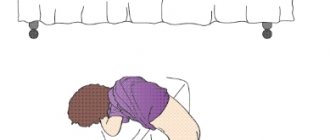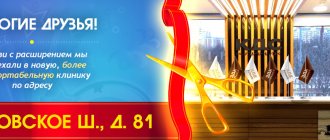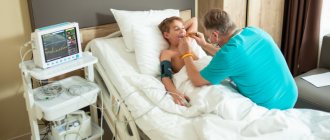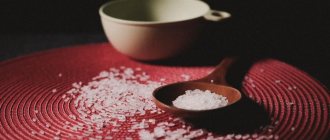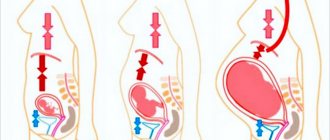Laxatives, medications that normalize intestinal microflora, diet, and physical activity can speed up bowel movements. However, it may take a long time for these methods to take effect. Laxatives and an enema (injection of liquid or medication into the rectum) can quickly relieve constipation.
Lactulose is allowed as a laxative for a newborn baby, and its effect is noticeable only the next day. To quickly empty the intestines, an enema may be recommended for the baby, the effect of which occurs within a few minutes. An enema for newborns for constipation should be recommended by the treating pediatrician.
What is an enema and what can it be?
What exactly is an enema? An enema is a medical procedure that involves injecting a liquid (water or medication) into the rectum.
I distinguish several types of enemas, depending on their purpose:
- Cleansing. Indicated for constipation, bloating, food poisoning, and for emptying the intestines of stool and gases. Performed using chilled boiled water.
It is very important that the water is exactly 24 - 26 ° C (room temperature). If you use hot water, you can cause a burn to the intestinal mucosa. Also, hot water dilates blood vessels and is well absorbed into the bloodstream, and the rectum is very well supplied with blood. Entering the bloodstream, water will pull with it all the toxins accumulated in the stool. “Fecal intoxication” may occur. The most terrible condition that can develop with this complication is cerebral edema.Therefore, before performing an enema, always consult a doctor, or even better, entrust the procedure to specialists.
- Laxative. Vaseline oil or glycerin is injected into the rectum with an enema. You can dilute them with a small amount of saline solution. This enema for an infant is indicated for constipation, especially when the baby has a dense consistency of stool. The oil solution softens the stool and helps the intestines empty.
- Hypertensive. The enema bulb is filled with a hypertonic solution (2.5%, 5% or 10%) of table salt.
This type of enema cleanses the intestines very well during prolonged constipation and is most often performed in a hospital setting by medical workers. The salty solution draws out the intestinal contents well. If you decide to prepare a hypertonic solution at home using water and salt, you must mix the solution thoroughly! Undissolved salt crystals can cause damage to your baby's intestinal lining. It is also necessary to observe the temperature regime of the solution. - Siphon. Such an enema is performed only in a hospital setting and is a purely medical procedure. A large volume of solution causes high intestinal lavage. Indicated for poisoning or fecal “blockages”.
- Medicinal enema. This is a method of administering a drug. Performed as prescribed by a doctor.
When does a child need an enema?
Poor nutrition leads to constipation.
Using a diagnostic enema, a special contrast agent is introduced into the intestine, which is necessary for an X-ray examination of the intestine.
A diagnostic enema is performed only after a cleansing enema. A cleansing enema is indicated for emptying the intestines of feces and is recommended for constipation, poisoning, and preparation for other types of enemas.
In this case, you should adhere to the appropriate temperature of the water in the enema - +30 - + 38 degrees.
If it is necessary to reduce body temperature during hyperthermia, you can also give a cleansing enema. The water should have a temperature of no more than +18 - + 20 degrees. The problem of bowel movement in infants is most often associated with enzyme deficiency or an incompletely formed digestive system. Older children often suffer from constipation due to:
- Poor nutrition;
- Congenital pathology (for example, dolichosigma - elongation of the sigmoid colon, Hirschsprung's disease - a genetic abnormality of the development of the large intestine);
- Chronic bowel disease;
- Violation of the normal balance of microflora in the intestine.
A laxative enema is also indicated for constipation, to facilitate the passage of feces in spastic colitis. When performing this type of enema, glycerin or vegetable oil is injected into the rectum, the effect of which occurs after a few hours. For this reason, such an enema is done mainly in the evening, so that the result is in the morning.
What volume of cleansing enema does a child need?
In addition to the temperature regime, you need to know how much solution can be administered to the baby. When administering a cleansing enema, the amount of fluid administered directly depends on the age of the child. The younger the baby, the less solution is needed to empty the intestines. There are standards for the volumes permissible for performing an enema on a child.
| Up to two months | 30 ml |
| 2 – 4 months | 60 ml |
| 6 -9 months | 70 – 100 ml |
| 9 – 12 months | 120 – 170 ml |
| 1 – 2 years | 200 – 250 ml |
| 25 years | 300 ml |
| 6 – 10 years | 400 – 500 ml |
Contraindications and precautions
Inflammatory pathologies located in the rectal area should be considered absolute limitations. In addition, contraindications include:
- bleeding from the stomach or intestines,
- neoplasms in the gastrointestinal tract,
- rectal prolapse,
- acute surgical pathologies, acute pain in the peritoneum.
This list also includes diagnoses such as massive swelling in the baby, rehabilitation measures after gastric and intestinal operations, and anal fissures.
In addition, when telling a 2-year-old child about enemas for constipation, pay attention to some precautions:
- Water temperatures should be between 25 and 27 degrees. It must be remembered that the higher they are, the more pronounced the laxative effect will be.
- A child over the age of two years can have enemas no more than once every 48 hours. At the age of four months to two years - from one to three times a day.
- The volume of the enema also varies: from one to two years, its volume can be no more than 200 ml. If the baby is already two years old, but not yet five - 300 ml.
- Concentrated solutions - table salt, soda, soap composition - should not be used. Plain water, a mixture of glycerin and vegetable oil are best. In the absence of allergies, chamomile decoction can be used.
- If you need to find out how an enema is given to children at school, then only contact a specialist. In a medical center, the child will be provided with all the necessary equipment for the procedure, a couch and access to the toilet.
What is needed to perform a cleansing enema?
- First of all, you need to prepare the place for the procedure.
- On a flat surface (changing table or crib), you need to lay an oilcloth and put a clean diaper or sheet on top of it.
- To perform an enema for a child under 4-5 years old, use a syringe. A syringe is a pear-shaped rubber canister with a rubber or plastic tip. There are different volumes of “pears” - from 30 ml, for the smallest children, to 360 ml. You can buy a syringe at any pharmacy; its cost is on average 100 rubles. For children over 4 years old, an Esmarch mug is required to perform an enema. This is a rubber cylinder with a volume of 2 liters, from which comes a silicone tube with a removable plastic tip. The cost of such a system in pharmacies is 200 - 500 rubles.
- Before performing an enema, you should prepare an enema solution, petroleum jelly or baby cream. For children older than one year, it is necessary to prepare a potty in advance.
What to do an enema with?
We present to your attention several simple and effective recipes for solutions suitable for infants.
With chamomile
A tablespoon of plant flowers is poured into 250 milliliters of boiling water, brought to a boil and boiled for 20 minutes over low heat. After this, it is infused for 30 minutes and filtered. Before use, the finished infusion is diluted with clean water in a 1:1 ratio.
Lemon juice + apple cider vinegar
Squeeze the juice of a medium lemon into a liter of boiled water and add a teaspoon of vinegar. The ingredients must be mixed thoroughly.
Apple cider vinegar for enema
How to perform a cleansing enema on a baby?
- First of all, before giving an enema to a baby, you need to prepare everything you need so as not to be distracted during the procedure.
- Before performing an enema, you should wash your hands.
- The syringe is boiled for about 30 minutes. Then we wait until it cools down.
- We squeeze the can to release the air, then slowly unclench it and draw in the required amount of solution.
- The tip of the bulb is lubricated with Vaseline, vegetable oil or baby cream to reduce the risk of intestinal trauma.
- The baby lies on his back, his legs are pressed against each other and raised slightly upward. Children older than one year can be placed on their left side, pressing their knees to their stomach.
- We spread the buttocks with our fingers and carefully insert the tip into the rectum to a depth of 2 - 4 cm.
- Slowly squeezing the bulb, we introduce liquid into the intestine.
- Carefully remove the tip and squeeze the buttocks for a few minutes.
- After defecation, we wash the baby, and thoroughly wash and dry the syringe.
Lack of bowel movements: when should you sound the alarm?
When a baby reaches the age of three, new foods containing fiber are already present in his diet. Also, the child is constantly moving, so he should already have bowel movements 4-6 times a week. If a child walks less than the established norm and complains of pain in the tummy, the mother is obliged to show him to the doctor. If, during diagnosis, the specialist did not find any pathologies that cause constipation, the baby can be given an enema.
A three-year-old child should go to the toilet up to 6 times a week
Important! An enema only makes defecation easier, but does not solve the problem of constipation.
Performing a cleansing enema for children over 4 years of age
- To perform the procedure, we use Esmarch's mug.
- The solution is poured into a rubber container. The volume depends on the age of the child. We also make sure to observe the temperature regime.
- We release a small amount of the contents of the pear to displace the air from the tube.
- The balloon should be fixed 1 meter above the level of the lying child to ensure a downward flow of fluid.
- We connect the tip to the system, lubricate it with Vaseline or vegetable oil. Plastic tips can be disposable. Then we take it out of the sterile packaging and throw it away after the procedure. If the tip is reusable, it must be boiled before use.
- The child lies on his left side with his knees tucked to his stomach.
- The tip is carefully inserted into the rectum 2 cm towards the abdomen, and then 2 - 4 cm posteriorly, towards the tailbone.
- The clamp on the tube opens and the solution enters the intestines.
- The tip is removed, and the child must lie down for another 10 minutes until the unbearable desire to defecate.
- Then the child is seated on the potty or toilet to have a bowel movement.
If you experience frequent constipation, you should not abuse enemas. Consult a doctor to determine the causes of the disease and solve the problem. Frequent use of cleansing enemas can lead to addiction and disruption of natural bowel movements.
In addition to cleansing with liquid, an enema has an irritating effect that stimulates intestinal motility, which helps with bowel movements. But stool does not always come out after an enema. It is necessary to ensure that all the liquid introduced into the intestines comes out. Sometimes emptying does not occur immediately, but after 30 - 50 minutes.
A correctly performed procedure is harmless and alleviates the baby’s condition. If you are not confident in yourself, you should not undertake manipulation. Contact your pediatrician who will examine your child and help with performing an enema.
Children's multidisciplinary medical center for children from 0 to 18 years old
07/22/2016 However, even despite the simplicity of this procedure, to achieve an effective result it must be carried out with great responsibility so as not to damage the baby’s delicate intestines. It should be noted that you should not get carried away with enemas, and carry out procedures only in cases of extreme necessity, when all known methods have been tried, but to no avail. If bowel problems occur too often in a child, it is necessary to identify and treat the cause of their occurrence. In addition, small children simply need to manage their abdominal muscles on their own without outside help. Types of enemas and rules for their implementation An enema is a procedure for introducing liquid into the rectum for the purpose of diagnosis or treatment. Depending on the effect that needs to be obtained, enemas are divided into: Cleansing - their purpose is to free the intestines from gases and feces. Depending on the age of the child, enemas are performed in different volumes: for newborns - 25 ml, at the age of 1-2 months - 30-40 ml, for babies 2-3 months - 50 ml, 2-4 months - 60 ml, at 6 months - 75- 100 ml, 6-9 months - 100-120 ml, 9-12 months - 120-180 ml, 1 year -150 ml, from 1 to 2 years -200-250 ml, from 2 to 5 years - 300 ml, from 5 to 9 years – 400 ml, over 10 years – 0.5 l. The enema liquid should be at a temperature no lower than 28 and no higher than 38 degrees. Medicinal - they are done only as prescribed by doctors in order to influence the medications on the intestinal lining. The temperature of the enema liquid should be 40-41° C. As a rule, through this type of enemas, the baby is given a decoction of chamomile in cases of flatulence, a 2% solution of chloral hydrate (for convulsions), antibiotics in the form of a suspension in warm fish oil, rosehip oil or sea buckthorn (for colitis, for frequent vomiting) and some other medications. Therapeutic enemas are given after cleansing ones. Nutrients - most often given for incessant bouts of vomiting. As a rule, weak glucose solutions and saline solutions are administered. Oily ones – as a laxative for children. Sunflower, hemp or vaseline oil heated to body temperature is injected into the rectum. The effect is achieved after approximately 8-10 hours, so this type of enema is best given at night. In rare cases, I use such enemas in cases of inflammation in the large intestine. Performing an enema on infants Before the procedure, you should thoroughly wash your hands with soap. To carry out a cleansing enema for children (infants, infants), it is necessary to first sterilize the rubber balloon by boiling for half an hour. As an enema, children are given boiled water at a temperature slightly lower than the child’s body temperature (older children can use cooler water). Then fill the balloon with the required volume of water, depending on the age of the baby, and thoroughly lubricate the tip of the balloon with Vaseline or vegetable oil. After this, you need to lay an oilcloth and a diaper on top, on which you place the child on the back and lift the legs up to the stomach, bending them at the knees. Older children (1-6 years old) are placed on their left side, and their legs are pulled towards their stomach. After this, spreading the buttocks, very carefully insert the tip of the balloon into the rectum, after releasing the air from it. A soft and short tip must be inserted completely, a harder and longer one must be inserted to a depth of 4-5 cm. After inserting the tip, slowly squeeze the balloon to introduce water into the intestines. The fluid should be administered as the child inhales. If the child begins to scream, the administration of water should be temporarily suspended. As soon as the required volume of liquid is introduced into the child’s intestines, the tip is slowly removed without unclenching. After that, the child’s buttocks must be squeezed with both hands and held for about a minute so that the liquid remains in the body as long as possible. Then the child can be turned first on one side, then on the other, on his stomach, which will allow the fluid to be distributed throughout the intestines. After completing the procedure, the child must be washed. After use, the container itself is thoroughly washed, boiled, dried and stored in a closed container. For atonic constipation (lack of intestinal tone), the recommended temperature of the injected fluid should be 18-20°C or even lower, and for spastic constipation (excessive intestinal peristalsis) - 37-38°C. To enhance the effect of the enema, it is allowed to add a little (1 tsp) glycerin or vegetable oil to the injected water. An enema should be given to a child during the first three years of life only with the permission of a doctor. After all, frequent constipation or unexplained abdominal pain can be signs of acute appendicitis, volvulus, pneumonia, strangulated internal hernia and some other serious diseases. Using an enema on your own can only be done in cases where it is necessary to reduce body temperature in sick children with high fevers, and also when it is known for sure that constipation in a child is caused by dietary mistakes. Performing an enema for older children. To carry out a cleansing enema in children over five years old, use an Esmarch mug with a volume significantly larger than a balloon (1.5-2 l). The child is placed on his left side, with his legs pulled towards his stomach. Esmarch's mug, after releasing the air by opening the tap, is filled with boiled water at a temperature of 20-22 degrees Celsius. The mug itself is hung on a special tripod at a distance of 50-75 cm from the child. The tip is also lubricated with Vaseline or oil and, slightly spreading the buttocks, it is gradually introduced into the intestine without pressure. At the beginning, it should be inserted a short distance forward towards the navel, then back, parallel to the tailbone, to a depth of 5-10 cm. The rate of fluid flow can be adjusted using a special clamp or tap placed on a rubber tube. After giving the child an enema, the tip must be removed and the child must be allowed to lie down for ten minutes, preferably turning over, until the desire to empty the intestines arises. Contraindications for an enema. Enemas to cleanse the child’s body are contraindicated in cases of suspected acute appendicitis, intestinal bleeding, intestinal obstruction, inflammatory process in the anus and other surgical diseases, also in cases of rectal prolapse and in the first days after surgery on the abdominal organs. In cases where the enema did not give the desired result, do not be alarmed. Water introduced into the intestines will not cause harm to health. The procedure can be repeated after six hours.
Alternative solutions to enema
If a child complains of pain during bowel movements, and his tummy is swollen and the baby constantly cries, you can use several methods to make it easier to pass hardened feces.
Baby or plain soap
A small piece of the substance is soaked under warm water until it becomes slippery. The soap is then carefully inserted into the baby's anal passage. The substance will help soften stool and make stool easier to pass. Soap can be used to make rectal suppositories.
Read also: Characteristics of medications for worms and parasites for humans, indications and contraindications
Thermometer
The narrowed part of the thermometer must be inserted into the child's anus and scrolled in different directions, thereby provoking irritation of the rectum. After some time, the child should have a bowel movement.
Cotton swab
The principle of using this method is similar to using a thermometer. Only before this the cotton wool is treated with baby cream, soap or petroleum jelly.
Microlax
Microlax must be injected into the body up to the mark indicated on the spout, squeeze out the contents of the container and pull it back. Lightened bowel movements should occur within two hours.
Causes of constipation in babies
The first thing you need to do in such a situation is to calm down. Parents must understand: nothing bad happened. Constipation can also occur in adults.
Sometimes a newborn has a bowel movement rarely: once every six days. Often the source lies in nutrition, its insufficiency. It's not about quantity, but about the quality of food. There is probably a lack of essential microelements and nutrients. In this case, it is worth enriching the baby’s diet with complementary foods. Preference is given to plant-based ones, which are guaranteed to provide regular bowel movements without delay.
Much depends on the mother: how a woman eats. You will have to reconsider your diet and include healthy foods so that your baby receives nutrients through milk. With proper nutrition, it is easy and simple to manage breastfeeding without using formula. Natural is better than synthetic. Adjusting the mother's diet will have a direct impact on the condition of the child's intestines - stool will normalize.
Constipation may be associated with insufficient work of the intestinal muscles and atony of its walls. Then abdominal massage and special exercises help. In addition to basic nutrition, the baby needs water.
Delayed bowel movements are likely due to intestinal spasms. Warm compresses applied to the stomach will help.
They resort to washing only in the last case, when other means have been tried.
How to prepare the solution correctly
Enemas are given to children with 4 types of solution:
- A cleansing enema for children washes the area of the colon and frees it from masses of stagnant feces, eliminating constipation;
- Oil – quickly eliminates symptoms of constipation, suitable for newborns;
- Medicinal – ensures rapid absorption of the drug through the walls of the large intestine;
- Siphon - such an enema is used to cleanse the rectum of the accumulation of feces through repeated infusions of the solution.
Please note how to properly prepare cleaning solutions at home.
Cleansing for constipation
The main purpose of a cleansing enema is to free the intestines from feces and waste formations. Read the instructions on how to give an enema to your child. Study the recipes for basic solutions used for enema:
- Hypertonic – eliminates toxic substances and waste. For constipation, this type of fluid is given to the child. To prepare, take 220 ml of water, add 1/2 teaspoon of table salt and boil. Use only when the solution reaches the desired temperature, that is, cools down. For a child from 0 to 2 months, the concentration of the hypertonic solution is halved. To do this, reduce the mass of salt by half.
- Chamomile decoction is used both as a cleansing enema and an antipyretic. To prepare the decoction, take 1 tbsp. spoon of flowers, pour 250 ml of just boiled water and leave for 1 hour. Then filter and bring to the desired temperature. In a cleansing enema, you can mix chamomile decoction and a hypertonic solution to achieve a laxative and disinfecting effect. At the same time, salt and chamomile are added to such a solution. The salt must first be boiled.
- Oil enema – has a laxative effect. Use olive or sunflower oil. To disinfect, the oil should be boiled for about 20 minutes using a water bath. Then cool; the temperature cannot exceed 39 0C when using.
Any solution filled with an enema helps cleanse the intestines.
Medicinal for fever
Is it advisable to give your baby an enema to bring down the temperature? The answer is definitely yes - in this condition the child can have an enema. It is better to choose a solution made from chamomile decoction. It is necessary to make the temperature of the liquid 1 degree lower than body temperature.
Using an analgin solution will help get rid of fever, accompanied by chills and fever.
You can give medicinal enemas only when medicinal methods of reducing the temperature have been exhausted. Analgin solution is prepared by mixing 50 ml of water with 1 ml of analgin. Without consulting a doctor, you can give an enema with analgin only 1 time, when traditional medications have not helped.
With garlic for worms
Garlic enema is a dubious option for getting rid of worms. Many parents are interested in how to give their child an enema that can expel parasites. This method is effective in the case of enterobiasis; it clears worms only in the lower parts of the intestine, when the parasites descend there to lay eggs.
Garlic liquid is prepared by brewing 4 or 6 cloves of garlic, which should be cut lengthwise and boiled in 250 ml of water or milk. Milk has enveloping properties, therefore it protects the intestinal mucosa.
Parents need to take into account that such anthelmintic cleansing is quite effective at home, but is difficult in terms of the behavior of the procedure itself.
To completely cleanse the intestines, you must repeat the procedure daily for 2 weeks. Think about whether the baby can endure a series of similar bullying.
